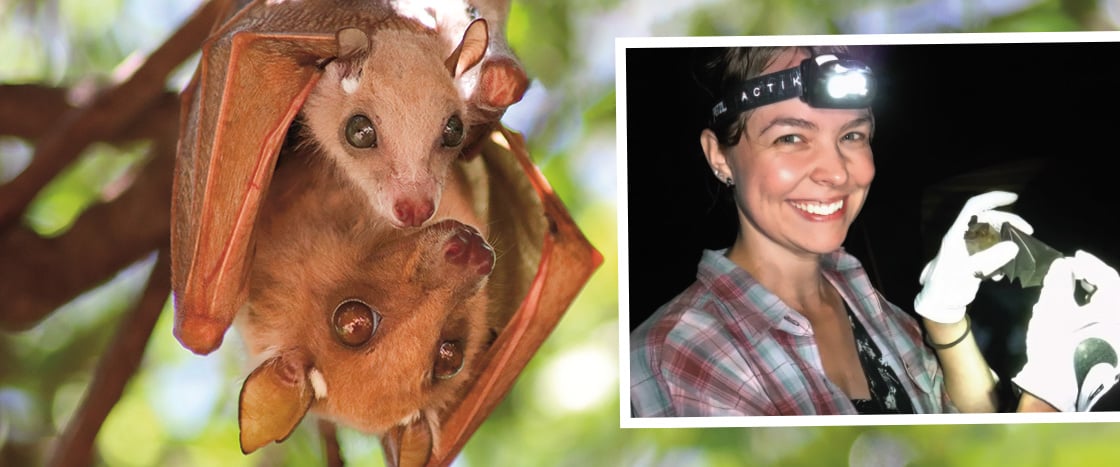Shutterstock.com
Bats are mammals. They feed on their mother’s milk often until they’re 5 weeks old.
Kristen Lear understands why some people find bats frightening. The nocturnal animals are often portrayed as spooky and dangerous. “Say you’re watching a scary movie, and the characters are walking through a creepy house,” she says. “What’s going to fly out and attack them? Bats!”
But this scene isn’t realistic, says Lear. Bats aren’t out to get us—in fact, many need our help. As a scientist at Bat Conservation International, Lear works to protect bats and their habitats. She recently spoke with SuperSTEM about sticking up for bats.
Kristen Lear knows why some people find bats scary. They’re nocturnal animals. They’re often shown as being spooky. “Say you’re watching a scary movie,” she says. “And the characters are walking through a creepy house. What’s going to fly out and attack them? Bats!”
But this scene isn’t very true to life, says Lear. Bats aren’t out to get us. In fact, many need our help. Lear is a scientist at Bat Conservation International. She works to save bats and their habitats. She recently spoke with SuperSTEM about sticking up for bats.


